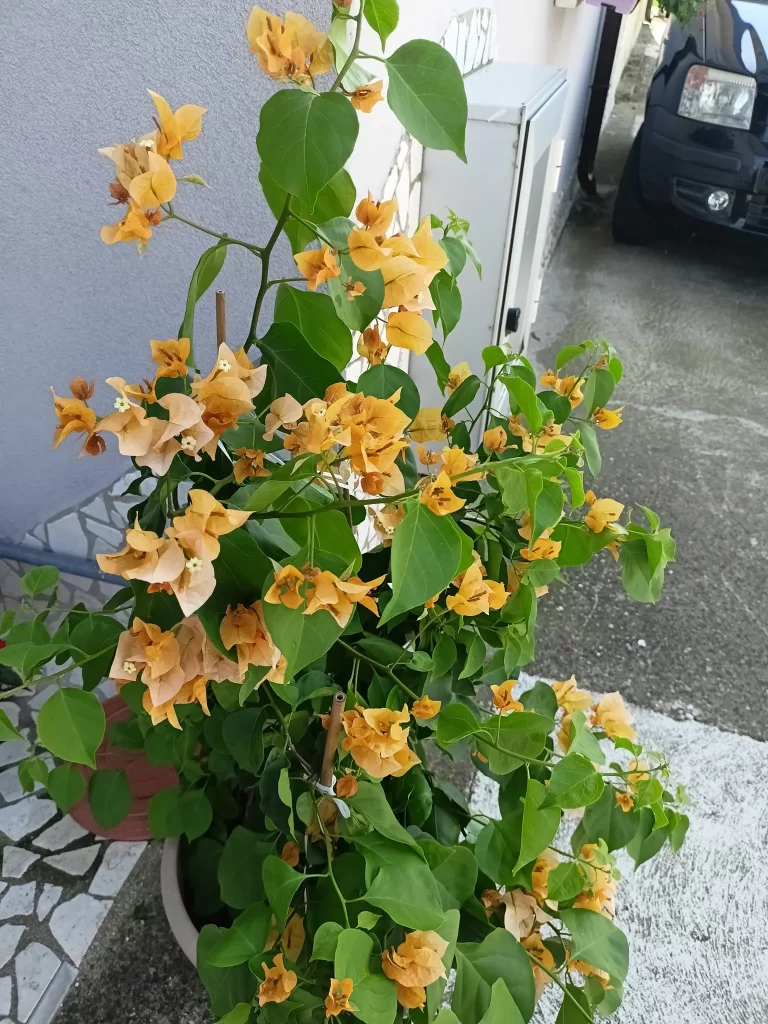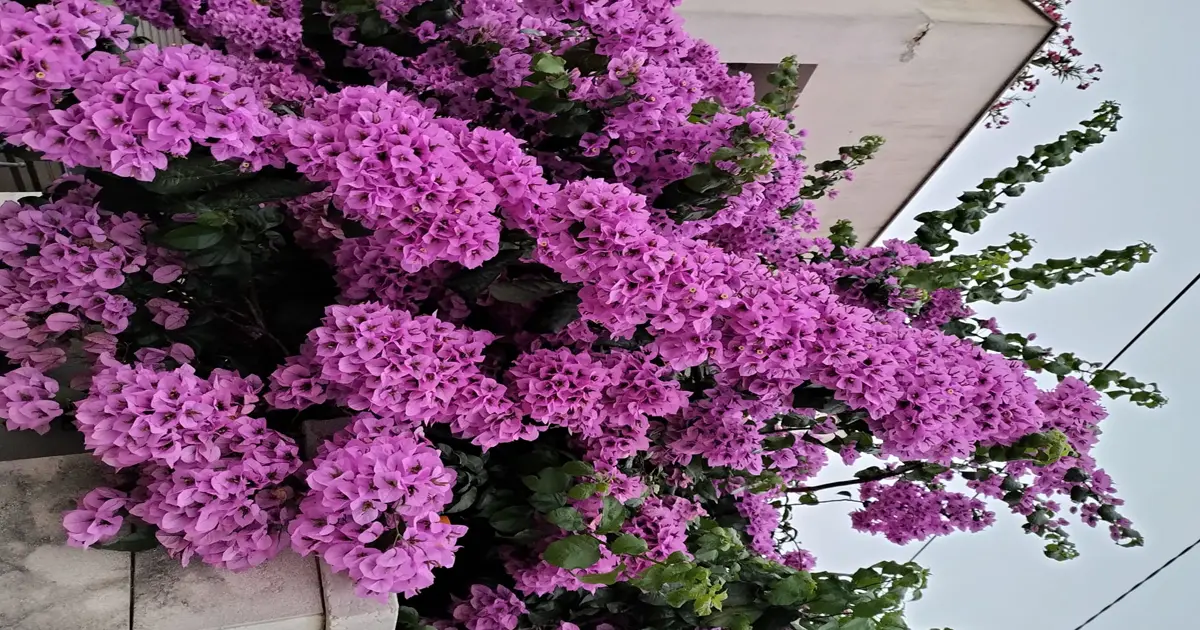Bougainvillea, also known as bougainvillea, is a climbing plant renowned for its striking beauty and decorative impact. Native to Brazil, this plant has the power to transform any outdoor space with its vibrant hues and lush flowering. This detailed guide delves into the cultivation and utilization of bougainvillea for external decoration, providing expert advice to achieve optimal results.
Characteristics of Bougainvillea
Bougainvillea is a perennial, climbing vine belonging to the Nyctaginaceae family. It is celebrated for its colorful bracts, often mistaken for flowers, though they are actually modified leaves. The true flowers of bougainvillea are small and white, nestled at the center of the bracts.
Bougainvillea Varieties
Several bougainvillea varieties exhibit distinct characteristics:
- Bougainvillea spectabilis: Noted for its large, colorful bracts.
- Bougainvillea glabra: Recognized for its smooth leaves and rapid growth.
- Bougainvillea peruviana: Distinguished by smaller bracts and more prolific flowers.
Cultivating Bougainvillea
Climate and Exposure
Bougainvillea thrives in warm, sunny climates. Ensure the plant receives at least 6 hours of direct sunlight daily.
- Ideal Temperature: Ranges between 20°C and 30°C.
- Cold Resistance: Bougainvillea is sensitive to frost; in winter, it is advisable to protect it or cultivate it in a pot for indoor relocation.
Soil and Watering
For robust growth, bougainvillea requires well-drained, slightly acidic soil.
- Soil Composition: A mix of sand, garden soil, and peat is ideal.
- Watering: During the growing season, water regularly but allow the soil to dry out between waterings to prevent waterlogging.
Fertilization
Bougainvillea benefits from regular fertilization during the growing season.
- Fertilizer Type: Use a balanced fertilizer, preferably high in phosphorus to promote blooming.
- Frequency: Fertilize every 4-6 weeks during spring and summer.
Pruning and Maintenance
Pruning is crucial to maintaining the shape and health of bougainvillea.
When to Prune
- Formative Pruning: In spring, to encourage the growth of new shoots.
- Maintenance Pruning: Throughout the year, to remove dead or damaged branches.
How to Prune
- Use sharp, disinfected pruning shears to prevent infections.
- Remove dead branches to reduce disease risk and enhance air circulation.
- Trim branches along trellises to maintain a compact and tidy shape.
Using Bougainvillea in Outdoor Decoration
Covering Walls and Fences
Bougainvillea is ideal for covering walls and fences, creating a spectacular visual effect.
- Support Installation: Employ trellises or support wires to guide the plant’s growth.
- Placement: Plant bougainvillea near the base of the structure to be covered and direct the branches as they grow.
Creating Pergolas and Arches
Bougainvillea can be used to craft beautiful pergolas and arches, providing shade and color.
- Pergola Structure: Opt for a sturdy framework capable of supporting the plant’s weight.
- Guiding Growth: Weave branches around supports to create a uniform cover.
Decorating Balconies and Terraces

In pots, bougainvillea is an excellent choice for enhancing balconies and terraces with a touch of exotic flair.
- Choosing Pots: Prefer deep containers with good drainage.
- Placement: Position pots in sunny, sheltered spots away from strong winds.
Common Issues and Solutions
Pests
Bougainvillea may suffer from aphids, mites, and mealybugs.
- Prevention: Utilize natural products like neem oil.
- Treatment: Address infestations promptly with targeted insecticides.
Diseases
Fungal diseases are common in humid environments.
- Prevention: Avoid excessive watering and ensure good air circulation.
- Treatment: Employ copper-based fungicides to combat infections.
Conclusion
Bougainvillea is a versatile and dramatic plant capable of transforming any outdoor space with its vivid colors and vigorous growth. With appropriate care and attention, you can enjoy its splendor for many years.

